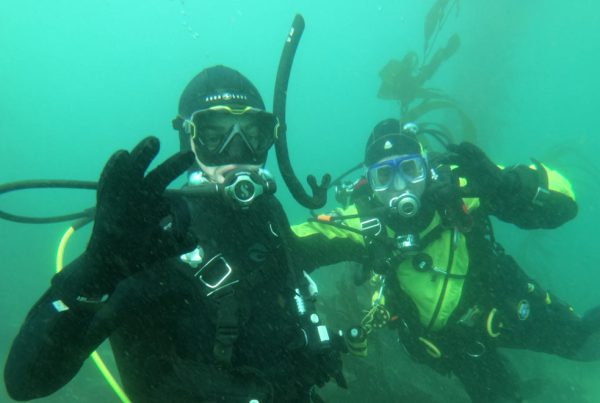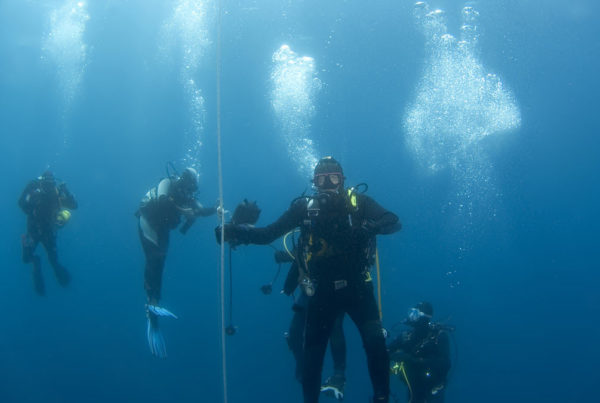There’s an old sailor’s proverb that states, “The only cure for seasickness is to sit on the shady side of an old brick church in the country.” While this whimsical advice is entertaining, it does not get at the heart of how serious seasickness may be, and how to prevent it. As to the seriousness, I offer the following true story.
During World War II a friend of mine was ordered to ship from San Francisco to Australia. From the very outset of the journey he was so seasick that it threatened his life. He could not eat or drink and was given intravenous fluids just to keep him alive. His torment continued for weeks. As his ship neared Australia he was informed that an enemy submarine was patrolling the area. This deeply religious man, with unbearable seasickness, actually prayed that the submarine would sink his ship.
While divers on charter vessels are not subjected to such extreme conditions, there are those who are regularly afflicted by some level of seasickness. The cause of seasickness is simple–the confusion that is created when your eyes and inner ear do not provide equivalent information to the brain. The cure, however, is often elusive. The symptoms of seasickness can frequently be prevented by a simple behavior changes and proper use of medication.
For those who are infrequently or moderately affected, simply get a good night’s sleep prior to your trip and avoid excessive food, alcohol and fluids. A moderate, low fat, and bland breakfast is best. Once at sea, stay above decks if you can, preferably somewhere amidship where the boat’s motion is minimal. It also helps to keep busy, but always look at the horizon. Keep your attention focused on distant objects so there is less confusion in the messages your brain receives.
If you feel you need to medicate yourself, numerous navies throughout the world have extensively and scientifically studied the cure, and have generally reached the same conclusions. Prescription formulations containing Scopolamine (the active ingredient in the TransdermScop® patch) always come out as the most effective. The next best drug was cinnarizine (Stugeron in the U.K. but not available in the U.S). Coming in third were the over-the-counter and familiar medications: dimenhydrinate (Dramamine®), meclizine (Bonine®, Antivert®), cyclizine (Marezine®), and promethazine (Phenergan®).
The biggest issue with these drugs is deciding when to take them, as many require 4 to 8 hours to become effective. If you wait until you are sick, these drugs will not help. The old divemaster’s advise it to begin taking the over-the-counter medication 12 hours before you sail, and then 2 hours before. As an added benefit, they often help you sleep better. Follow your doctor’s directions on prescription drugs. Importantly, every person is unique and reacts to drugs differently. Scopolamine, in particular, has many side effects, so be cautious. The old divemaster suggests not taking any of these medications for the first time while on a dive trip. Try them first ashore to see how you react.
There are also many popular remedies such as wristbands and ginger; and while some of these appear promising in some studies, they do not look promising in all studies. The U.S. Navy, for instance, found that ginger did not prevent seasickness, but did make breakfast taste better the ‘second time around.’ There is, however, a psychological component to seasickness that should not be understated. If you truly believe a remedy will work for you, it probably will. Remember that diving is supposed to be fun. Find something that works for you and keep doing it. Remember too, sickness often magically disappears when you get in the water.









